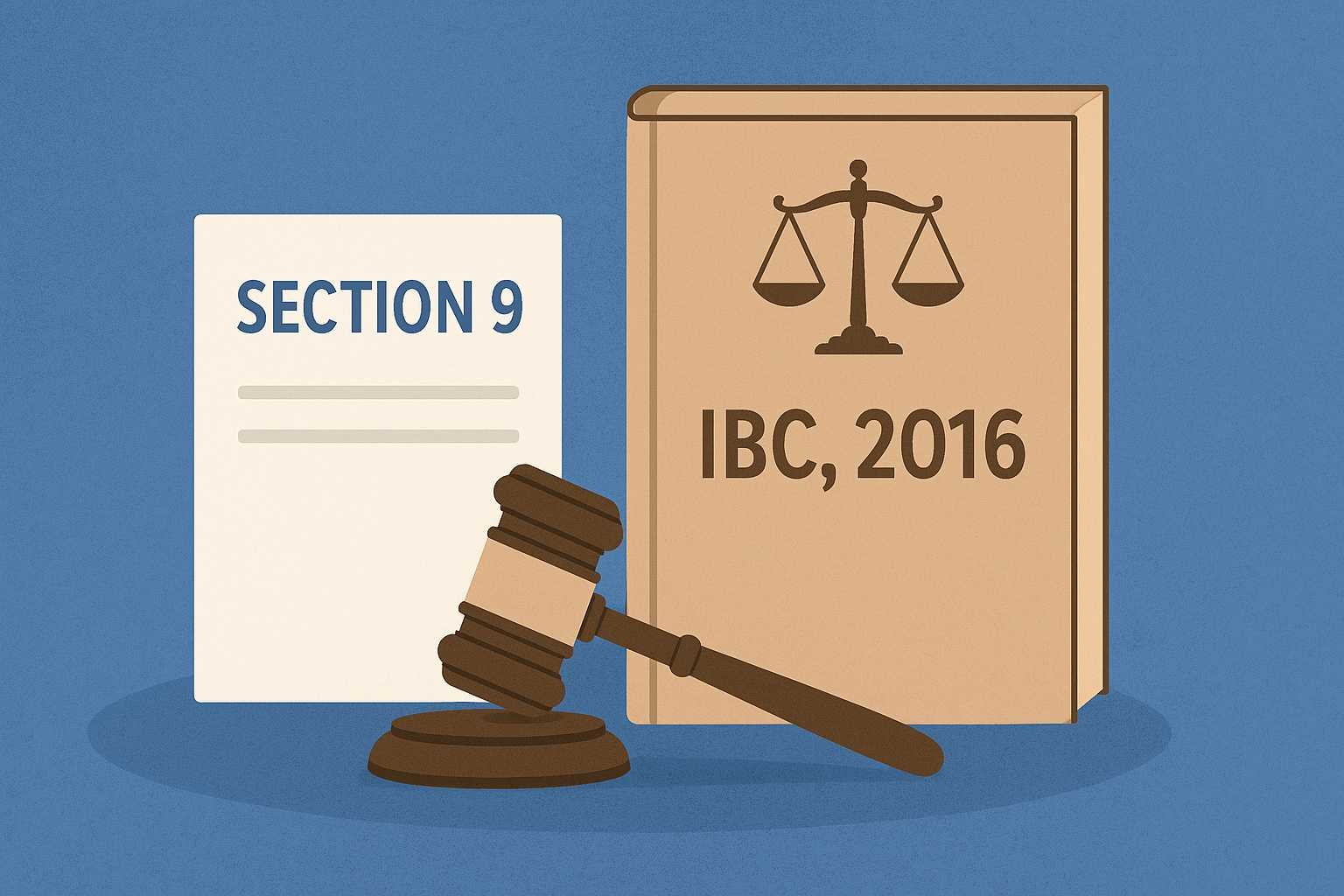On this page you will read detailed information about Energy Conservation Act 2001.
As a professional interested in environmental policy, you likely understand the importance of energy conservation for promoting sustainability. The Energy Conservation Act 2001 represents a major legislative milestone in India’s efforts to reduce energy consumption across sectors. In this article, you will learn about the key provisions of this act, its implementation mechanisms, and its impact on India’s energy security and carbon emissions. With India’s energy demand projected to grow rapidly, the need for demand-side management policies like the Conservation Act remains high. This background will empower you to evaluate the efficacy of this law and consider opportunities to strengthen India’s energy conservation initiatives. Through an objective assessment of its strengths and limitations, you will gain insight into designing more effective policies to curb energy waste and meet climate goals.
Overview of the Energy Conservation Act 2001
Purpose and Scope
The Energy Conservation Act 2001 was enacted by the Indian government to promote energy efficiency and conservation. It provides for the creation of the Bureau of Energy Efficiency (BEE), which regulates and enforces energy consumption standards and labelling programs in India. The Act empowers the central government to specify energy consumption standards for notified equipment and appliances, aimed at improving energy efficiency in India.
Standards and Labeling
The BEE develops minimum energy performance standards and labels for equipment and appliances in consultation with stakeholders. These standards aim to eliminate the least efficient products from the market and push manufacturers to improve efficiencies over time. The BEE’s Standards and Labeling Program covers 34 equipment types including air conditioners, refrigerators, motors, and agricultural pump sets. Products that meet standards receive a BEE label to certify their efficiency.
Compliance and Enforcement
The BEE regularly monitors the market to check if new products comply with the prescribed standards. Manufacturers or importers of non-compliant products may face penalties and legal prosecution. The BEE also conducts energy audits on large commercial buildings and industries to identify opportunities for improving energy efficiency. It provides recommendations and resources to help facilities implement energy conservation measures.
To summarize, the Energy Conservation Act established a robust regulatory framework to improve energy efficiency across India. By setting progressive standards, certifying and labeling efficient products, conducting audits, and enforcing compliance, this Act has successfully accelerated the adoption of energy-efficient technologies and practices in India over the past two decades.
Key Provisions of the Energy Conservation Act
Energy Conservation Building Code
The Energy Conservation Act established the Energy Conservation Building Code (ECBC) which sets minimum efficiency standards for commercial buildings in India. The ECBC aims to optimize energy savings through efficient building design and construction. It specifies requirements for building envelope, lighting, heating, ventilation, and air conditioning (HVAC) and electrical systems. The ECBC is updated regularly to incorporate newer technologies and procedures.
Energy Conservation Fund
The Act established the Energy Conservation Fund to provide financial assistance for energy efficiency projects and initiatives. The Fund is administered by the Bureau of Energy Efficiency (BEE) and utilized for activities such as:
- Research and development in the field of energy conservation.
- Demonstration projects relating to energy conservation.
- Granting of subsidies or loans for adoption of energy conservation measures.
- Carrying out inspection or evaluation or verification of the measures adopted for energy conservation.
Energy Conservation Building Materials
The Act promotes the use of energy efficient building materials and components. The BEE specifies norms for energy consumption standards and provides ratings and labels for building materials and components. Manufacturers and builders are encouraged to utilize materials and designs that meet these efficiency standards.
Compliance and Penalties
The Act makes provisions for compliance, monitoring and verification of energy conservation norms. States are required to designate agencies to ensure compliance with the ECBC and other provisions. The BEE is authorized to conduct inspections and audits for verifying compliance. Failure to comply can result in penalties, including imprisonment up to 1 year and/or fines up to INR 10,000 per day of violation.
The Energy Conservation Act provides a robust framework for improving energy efficiency across India. By establishing codes, standards and compliance mechanisms, it aims to significantly reduce energy consumption in the building sector and promote a culture of energy conservation nationwide.
In the previous post, we had shared information about The Coal Mines Act 1952: An Overview of Indian Mining Legislation, so read that post also.
Institutions Established Under the Act
Bureau of Energy Efficiency
The Bureau of Energy Efficiency (BEE) was established under the Energy Conservation Act in 2002 to assist in developing policies and strategies with the goal of reducing the energy intensity of the Indian economy. The BEE coordinates with designated consumers, designated agencies and other organizations to identify and utilize the existing resources and infrastructure in performing the functions assigned to it under the Act.
State Designated Agencies
The State Designated Agencies (SDAs) were also established under the Act to facilitate and implement energy efficiency initiatives at the state level. The SDAs provide technical support to the State Electricity Regulatory Commissions (SERCs) and coordinate with distribution companies, electricity consumers and the BEE. They are also responsible for the development and implementation of energy conservation building codes, capacity building of architects and enforcing compliance with energy conservation building codes.
State Energy Conservation Fund
The State Energy Conservation Fund was created to provide financial assistance for initiatives aimed at promoting efficient use of energy and its conservation. The fund is managed and maintained by the SDAs for providing incentives, subsidies and grants to project proposals received from government agencies, PSUs, private and joint sector companies, societies, etc. The SERCs approve projects and monitor their implementation in coordination with the SDAs.
To summarize, the Energy Conservation Act 2001 led to the establishment of institutions such as the BEE, SDAs and State Energy Conservation Funds to develop and implement policies, provide technical and financial support as well as enforce compliance for achieving greater energy efficiency and security across all sectors in India. By coordinating the efforts of multiple stakeholders, these institutions have played an instrumental role in facilitating India’s transition to an energy efficient economy.
Energy Conservation Building Codes
Commercial Buildings
The Energy Conservation Act established mandatory energy conservation building codes for commercial buildings in India. These building codes set minimum energy efficiency standards for new commercial building construction and major retrofits of existing buildings. The codes specify requirements for building components such as heating/cooling equipment, lighting, and building envelopes to improve energy efficiency.
Residential Buildings
The Energy Conservation Act also put in place energy efficiency standards for residential buildings. These standards establish minimum energy performance requirements for new home construction and major renovations of existing homes. They include specifications for building elements such as wall and ceiling insulation, windows, lighting, heating/cooling equipment, water heating equipment, and other appliances. The residential building codes aim to improve comfort, reduce energy costs, and lower environmental impacts.
Compliance and Enforcement
The energy conservation building codes for commercial and residential buildings outlined in the Energy Conservation Act are mandatory for all states and union territories in India to adopt and enforce. Local governments and municipal corporations are responsible for ensuring compliance with the building codes for any new building construction or major retrofits in their jurisdiction. Building permits will only be issued if the proposed building plans meet the minimum energy efficiency standards specified in the codes. Compliance is verified through on-site inspections at various stages of construction. Penalties may be imposed for any violations of the building codes.
The establishment of energy conservation building codes was an important step towards improving energy efficiency and reducing the energy intensity of the buildings sector in India. By setting minimum standards for energy performance in new and existing buildings, the building codes have helped catalyze the adoption of energy-efficient technologies and practices in building design and construction across the country.
Initiatives to Promote Efficient Use of Energy Resources
Energy Conservation Building Code (ECBC)
The ECBC sets minimum energy efficiency standards for new commercial buildings to reduce energy consumption and improve energy efficiency. The code covers building envelopes, mechanical systems, lighting systems, and electrical systems. Compliance with the ECBC can result in energy savings of 25-40% in commercial buildings.
Perform Achieve and Trade (PAT) Scheme
The PAT scheme aims to reduce energy consumption in energy-intensive industries through the issuance of energy savings certificates that can be traded. Industries that exceed their targets can sell excess energy savings certificates to those that fail to meet targets. This market-based mechanism incentivizes industries to adopt energy efficiency measures to overachieve their targets and generate revenue from the sale of energy savings certificates.
Standards and Labeling Program
The standards and labeling program sets minimum energy performance standards and comparative labels for appliances and equipment to allow consumers to make informed choices. The program currently covers 21 appliances including air conditioners, refrigerators, transformers, and motors. By eliminating the least efficient products from the market and incentivizing manufacturers to improve efficiencies, the program is estimated to save over 9 billion units of electricity annually.
To summarize, the initiatives aim to tackle energy efficiency in buildings, industries and appliances through regulatory standards, market-based mechanisms and comparative labels. By improving energy efficiency across sectors, these initiatives can significantly reduce energy demand and intensity, contributing to national goals on climate change mitigation and energy security. Overall, a multi-pronged approach is needed, targeting all areas where energy is consumed, to fully maximize energy savings and meet the country’s energy efficiency potential.
Penalties for Non-Compliance With the Act
The Energy Conservation Act 2001 outlines several penalties for non-compliance to encourage compliance from designated consumers and other entities. If a designated consumer fails to comply with the energy conservation building code or other requirements as stipulated in the Act, they may face monetary penalties and even imprisonment.
According to the Act, if a designated consumer fails to comply with the building code or energy conservation measures, they can be penalized up to ₹1 lakh for residential buildings and ₹5 lakh for commercial buildings. The State Government is also authorized to stipulate higher penalties for frequent offenders. The Act also states that if the non-compliance continues even after imposing the penalty, the designated consumer can face additional fines up to ₹10,000 per day.
Furthermore, the Act permits the State Government to cancel or withhold future power supply to designated consumers who do not comply with the energy conservation measures, even after receiving penalties. The State Government also reserves the right to blacklist contractors, architects, and other professionals involved in the construction of the non-compliant building. These harsh penalties highlight the importance of compliance to the energy efficiency standards and building code.
The Energy Conservation Act also prescribes penalties for other contraventions, such as failure to furnish information or maintain records, failure to display the energy consumption certificate, providing false information, tampering with meters, etc. These offenses can attract penalties up to ₹1 lakh and imprisonment up to 5 years. The Act empowers state energy conservation funds to utilize the proceeds from the collection of penalties for promoting energy efficiency initiatives.
In summary, the Energy Conservation Act 2001 levies strict penalties for non-compliance with its provisions to ensure energy efficiency standards are duly followed. Designated consumers and other stakeholders must comply with the requirements of the Act to avoid facing legal consequences and financial penalties.
Amendments to the Energy Conservation Act Over the Years
The Energy Conservation Act (ECA) of 2001 has seen several amendments over the years to further strengthen India’s energy efficiency initiatives. In 2010, the ECA was amended to include new provisions for facilitating energy efficiency in buildings. The amendment mandated commercial buildings with a connected load of 100 kW or greater to comply with the Energy Conservation Building Code (ECBC). The ECBC sets minimum efficiency standards for commercial buildings in areas such as building envelope, heating, ventilation and air conditioning (HVAC), lighting, and electrical systems.
In 2012, additional amendments were made to the ECA to broaden its scope. The amendments included new provisions for energy efficiency in industries, appliances, and vehicles. For industries, the amendments mandated energy audits for large energy-consuming units and the development of energy consumption norms for various industrial processes and operations. For appliances and vehicles, the amendments expanded the scope of standards and labeling program to cover more product categories.
The ECA amendments of 2017 further expanded the scope of energy efficiency initiatives in India. The amendments introduced new provisions for energy efficiency in transport including fuel efficiency standards for vehicles, energy efficiency in buildings by making ECBC compliance mandatory for commercial buildings, and energy efficiency in agriculture and municipalities. The amendments also strengthened compliance and enforcement provisions including higher penalties for violations.
Over the years, the continuous strengthening of ECA through amendments has helped India significantly improve its energy efficiency and conservation efforts across sectors. The ECA and its amendments have provided the much-needed policy framework and regulatory push to drive energy efficiency in India while also enabling people to make more informed choices through initiatives such as standards and labeling. Overall, ECA has been instrumental in helping India progress towards its goal of reducing energy intensity of its economy.
Impact and Implementation Challenges of the Act
The Energy Conservation Act of 2001 was introduced to promote efficient use of energy and its conservation in India. However, its implementation has faced several difficulties.
A key objective of the Act was to establish the Bureau of Energy Efficiency (BEE) to facilitate energy efficiency improvements in the economy. The BEE developed energy consumption standards and labeling programs for appliances and equipment. It also created awareness campaigns to educate people about energy efficiency. However, the BEE has faced budget and staffing constraints, limiting its effectiveness. Additional funding and resources are required for the BEE to achieve its mandate.
Insufficient compliance and enforcement
The Act empowers state governments to check if building designs comply with energy efficiency guidelines. However, compliance and enforcement have been limited. Most states lack trained personnel and testing equipment to evaluate building plans. Stricter compliance and penalties for violations are needed.
Financial barriers
Although the Act promotes public-private partnerships and incentives for energy efficiency projects, high upfront costs and lack of access to financing are barriers for many entities, especially small businesses, to adopt energy efficient technologies and practices. Innovative financing mechanisms such as rebates, tax incentives and low-interest loans can help overcome these barriers.
Gaps in coverage
The Act covers only commercial buildings and a few appliances. It needs to expand to include other sectors such as industries, transportation and agriculture. Developing minimum energy performance standards and labeling programs for more equipment and processes across sectors can significantly improve India’s energy efficiency.
Overall, while the Energy Conservation Act of 2001 was a step in the right direction, enhanced implementation, stricter compliance, innovative financing, and expanded coverage are required for the Act to achieve its full potential in reducing India’s energy intensity and accelerating its transition to greater energy efficiency and sustainability. Continuous improvements to policies and programs are needed to overcome challenges, change behaviors and make progress. With concerted efforts, the vision of the Act can be realized.
FAQs About the Energy Conservation Act 2001
The Energy Conservation Act 2001 was passed by the Indian government to promote efficient use of energy and its conservation. It has several provisions and guidelines regarding energy usage that are important to understand.
The primary objectives of the Energy Conservation Act are:
I) To regulate energy consumption across sectors like industry, transportation, building, etc.
II) To promote efficient use of energy and its conservation.
III) To reduce energy intensity and encourage use of renewable energy.
IV) To establish institutions like the Bureau of Energy Efficiency to facilitate energy conservation initiatives.
The Act has mandated specific energy consumption norms for industries like power plants, fertilizer, and cement. Industries have to adhere to these norms and install efficient energy equipment. They also have to conduct energy audits to monitor energy usage and submit reports to the government. Failure to comply can lead to penalties.
The Act has provisions for improving energy efficiency in new and existing buildings. It has made ECBC or Energy Conservation Building Code mandatory for commercial buildings. The code specifies energy performance standards for building components like lighting, heating, air conditioning, insulation, etc. The Act also requires periodic energy audits for buildings.
The Act aims to improve fuel efficiency of vehicles by promoting measures like:
I) Tighter fuel economy standards for vehicles.
II) Incentives for manufacturing and purchasing energy efficient vehicles.
III) Promotion of alternative fuels like biofuels, CNG, LPG, etc.
IV) Improvement of public transportation to reduce energy usage.
The Energy Conservation Act 2001 is a comprehensive legislation with far-reaching initiatives to boost efficient energy utilization across sectors. Compliance with the provisions of the Act can significantly help in reducing energy consumption and its environmental impact.
Conclusion
As a leader in your industry, you have a responsibility to understand and comply with the Energy Conservation Act 2001. This act was designed to promote efficient use of energy and its conservation, helping India move towards energy security and a sustainable future. By learning the key provisions, understanding your obligations, and taking proactive steps for compliance, you can position your organization as a leader in this space. Implementing the recommendations in this article will ensure your company not only complies with the law but exceeds expectations. Your commitment can motivate stakeholders across industries to follow suit, creating momentum for nationwide change. The Energy Conservation Act 2001 was a progressive step by the government; now it is time for enterprises to demonstrate progress.
Disclaimer
The information and services on this website are not intended to and shall not be used as legal advice. You should consult a Legal Professional for any legal or solicited advice. While we have good faith and our own independent research to every information listed on the website and do our best to ensure that the data provided is accurate. However, we do not guarantee the information provided is accurate and make no representation or warranty of any kind, express or implied, regarding the accuracy, adequacy, validity, reliability, availability, or completeness of any information on the Site. UNDER NO CIRCUMSTANCES SHALL WE HAVE ANY LIABILITY TO YOU FOR ANY LOSS OR DAMAGE OF ANY KIND INCURRED AS A RESULT OR RELIANCE ON ANY INFORMATION PROVIDED ON THE SITE. YOUR USE OF THE SITE AND YOUR RELIANCE ON ANY INFORMATION ON THE SITE IS SOLELY AT YOUR OWN RISK. Comments on this website are the sole responsibility of their writers so the accuracy, completeness, veracity, honesty, factuality and politeness of comments are not guaranteed.
So friends, today we talked about Energy Conservation Act 2001, hope you liked our post.
If you liked the information about Energy Conservation Act 2001, then definitely share this article with your friends.
Knowing about laws can make you feel super smart ! If you find value in the content you may consider joining our not for profit Legal Community ! You can ask unlimited questions on WhatsApp and get answers. You can DM or send your name & number to 8208309918 on WhatsApp








